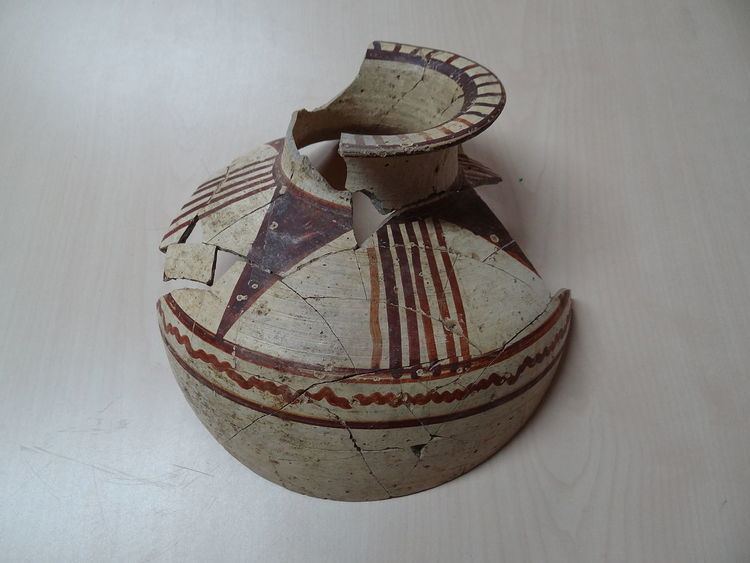 | ||
Tell Abu al-Kharaz ('Mound of the Father of Beads') is a Bronze and Iron Age archaeological site in Gilead in the eastern Jordan Valley. This ancient settlement was identified with the biblical Jabesh Gilead (Judges 21:8-15, 1 Samuel 11:1-11, 31:11-13, 2 Samuel 2:4-5, 21:12, 1 Chronicles 10:11-12). It was also identified with the burial site of King Saul.
Contents
Location
The site is located 35 km from the Sea of Galilee, and 80 km from the Mediterranean Sea; it is 4 km east of the Jordan River, and 6 km south-southwest of Pella, Jordan. It was at the crossroads of ancient trade routes that linked Megiddo and Beit Shean to the Mediterranean.
The Tell is about 60 meters high (-200 m above sea level) and covers an area of 300x400 m. It was excavated between 1989 and 2001 by the Swedish Jordan Expedition under the direction of Peter M. Fischer.
Chronology
The settlement mound was inhabited from the Chalcolithic until the Islamic period. Archaeological evidence demonstrates that the oldest town from the Early Bronze Age around 3000 BCE was the largest.
The site is believed to have been abandoned for over a thousand years – between the Early Bronze Age (EBA II) and the late Middle Bronze Age (from approximately 2900 to 1650 BCE).
Finds
Since the Middle Bronze Age (MB IIC, ca 1600 BC), local Jordan valley type pottery, and Cypriot type pottery were predominant in Tell Abu al-Kharaz. Egyptian imports were almost completely missing. Cypriot imports were also found in the area (White slip I ware).
Large amount of Chocolate-on-white ware was found at Tell Abu al-Kharaz. This type of pottery was most likely produced locally on-site, but it is also present at several other sites in the Jordan Valley and nearby areas. There is no confirmed find of such pottery on Cyprus or in the Aegean.
Imports
The earliest imports (phase 1, Early Bronze Age) have been identified as cylindrical jars, and mace heads coming from Egypt (Naqada IIIB). Up to now, these finds represent the furthest northern spread of such Egyptian imports of this early period.
